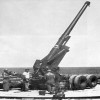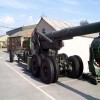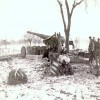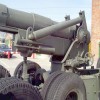|
|
||||||||||||||||||||||||||||||||||||||||||||||||||||||||||||||||||||||||||||||||||||||||||||||||||||||||||||||||||||||||||||||||||||||||||||||||||||||||||||||||||||||||||||||||||||||||||||||||||||||||||||||||||||||||||||||||||||||||||||||||||||||||||||||||||||||||||
 |
||||||||||||||||||||||||||||||||||||||||||||||||||||||||||||||||||||||||||||||||||||||||||||||||||||||||||||||||||||||||||||||||||||||||||||||||||||||||||||||||||||||||||||||||||||||||||||||||||||||||||||||||||||||||||||||||||||||||||||||||||||||||||||||||||||||||||
| By Lasse Jensen |
Last updated 22 June 2002 |
|||||||||||||||||||||||||||||||||||||||||||||||||||||||||||||||||||||||||||||||||||||||||||||||||||||||||||||||||||||||||||||||||||||||||||||||||||||||||||||||||||||||||||||||||||||||||||||||||||||||||||||||||||||||||||||||||||||||||||||||||||||||||||||||||||||||||
 155mm Gun M1/M1A1/M2 on M1 carriage.
155mm Gun M1/M1A1/M2 on M1 carriage.
|
||||||||||||||||||||||||||||||||||||||||||||||||||||||||||||||||||||||||||||||||||||||||||||||||||||||||||||||||||||||||||||||||||||||||||||||||||||||||||||||||||||||||||||||||||||||||||||||||||||||||||||||||||||||||||||||||||||||||||||||||||||||||||||||||||||||||||
|
||||||||||||||||||||||||||||||||||||||||||||||||||||||||||||||||||||||||||||||||||||||||||||||||||||||||||||||||||||||||||||||||||||||||||||||||||||||||||||||||||||||||||||||||||||||||||||||||||||||||||||||||||||||||||||||||||||||||||||||||||||||||||||||||||||||||||
|
|
||||||||||||||||||||||||||||||||||||||||||||||||||||||||||||||||||||||||||||||||||||||||||||||||||||||||||||||||||||||||||||||||||||||||||||||||||||||||||||||||||||||||||||||||||||||||||||||||||||||||||||||||||||||||||||||||||||||||||||||||||||||||||||||||||||||||||
|
To increase divisional fire-power, the U.S.
Army began research on a long range cannon in 1920 (most US guns began
there development in the 1920, by Westervelt Board recommendations) in the
hope of installing a 155mm and a 203mm howitzer on one chassis. This was
to simplify the production process and to decrease maintenance cost. There were two 8 inch howitzers subsequently developed, the M1920 and the M1920M1, plus a carriage which could also be used for a 155 mm gun. Owing to a shortage of funds the project was suspended until 1927. Between 1927 and 1929 the carriage was redesigned for high-speed transport. The 155mm gun barrel was begun in the 1930ties. In 1939, after test of the T3 8in howitzer, it was standardized as the '8 in Howitzer M1 and the 155 mm Gun/8 in Howitzer Carriage T2E1'. Minor modifications to the carriage standardized it as the M1. A new 155mm barrel was then smacked on the new M1 carriage. The 155mm heavy gun, nicknamed "Long Tom" could fire with very high accuracy. The gun is so long that if the trunion, which effects the raising and lowering of the rifle, were put at the center of balance, the breech of the gun would go into the ground whenever the muzzle was raised high. The solution was to put the trunion farther back, and to make the gun easy to raise and lower by hand by substituting mechanical balance for natural balance. The equilibrator does the mechanical balancing. The origin of the word 'Long Tom', is unknown to me, but it is probably a US invented name, although most names of other WW2 US equipment is of British origin. Guess they had a hard time also with the 'all named M1' naming of the US also :). A number of guns has late war /post war been labeled the term 'Long Tom' by various writers too. Most notable the French 155 GPF. This is not correct, there is but one 'Long Tom' and this is the 155mm Gun M1/M1A1. After the Second World War the complete weapon was redesignated the 'Gun, Heavy, Towed: 155mm: M59' This consisted of Cannon Howitzer M1 or M1A1, Recoil Mechanisms M4 series (M4, M4A1, M4A2 or M4A3), and Carriage M1. The M-59 cannon has been in use in countries like the U.S., R.O.C., Japan, Austria, Argentina, Denmark, Greece, Italy, South Korea, Jordan, Pakistan, Turkey, Czechoslovakia, etc. and, when mounted on a self-propelled tracked chassis, as the M40. A special mount for the gun was developed in 1943. "The 'Kelly Mount' was the equivalent of a transportable Panama Mount (155mm GPF) but made for the dimensions of the 155mm Gun M1. It was designed by Colonel Peter K. Kelly, then Regimental Executive Officer, Harbor Defenses of San Francisco, to enable the Long Tom to be used against moving seaborne targets. ... The Kelly Mount was officially designated as 155mm Firing Platform, T6E1. By the summer of 1944, the 155mm guns on the "Kelly Mount" were in action in the Pacific Theater of Operations by both US Army Coast Artillery units and US Marine Corps Defense Battalions. The mount was officially adopted by the Coast Artillery and Ordnance Corps as the 155mm Gun Platform, M1, with a unit cost of $4,964.00. At the end of WWII, the M1 carriage was installed on a M4A3 'Sherman' tank hull, to increase it's mobility, and was named the M-40 self-propelled gun. |
||||||||||||||||||||||||||||||||||||||||||||||||||||||||||||||||||||||||||||||||||||||||||||||||||||||||||||||||||||||||||||||||||||||||||||||||||||||||||||||||||||||||||||||||||||||||||||||||||||||||||||||||||||||||||||||||||||||||||||||||||||||||||||||||||||||||||
|
|
||||||||||||||||||||||||||||||||||||||||||||||||||||||||||||||||||||||||||||||||||||||||||||||||||||||||||||||||||||||||||||||||||||||||||||||||||||||||||||||||||||||||||||||||||||||||||||||||||||||||||||||||||||||||||||||||||||||||||||||||||||||||||||||||||||||||||
|
References: Additional web resources. Various web notes. |
||||||||||||||||||||||||||||||||||||||||||||||||||||||||||||||||||||||||||||||||||||||||||||||||||||||||||||||||||||||||||||||||||||||||||||||||||||||||||||||||||||||||||||||||||||||||||||||||||||||||||||||||||||||||||||||||||||||||||||||||||||||||||||||||||||||||||
|
|
||||||||||||||||||||||||||||||||||||||||||||||||||||||||||||||||||||||||||||||||||||||||||||||||||||||||||||||||||||||||||||||||||||||||||||||||||||||||||||||||||||||||||||||||||||||||||||||||||||||||||||||||||||||||||||||||||||||||||||||||||||||||||||||||||||||||||
|
All pages and Graphic on Builders Paradise are copyrighted (c) by LHJWORLD (TM) 2002 |
||||||||||||||||||||||||||||||||||||||||||||||||||||||||||||||||||||||||||||||||||||||||||||||||||||||||||||||||||||||||||||||||||||||||||||||||||||||||||||||||||||||||||||||||||||||||||||||||||||||||||||||||||||||||||||||||||||||||||||||||||||||||||||||||||||||||||





